For the arrangement of a room, not only furniture, redecoration and a soft rug are important. To make the room cozy, you need to choose the right lighting device. Among the light sources, LED spotlights are best suited for this role.
Application of LED spotlights
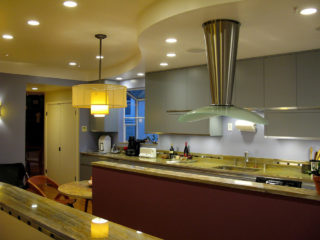
Spot lighting is a great option for decorating an interior. The right light is good for your eyesight and makes the room look good. LEDs are small in size and are mounted in false ceilings, less often in walls. With their help, you can create light collaborations, drawings, play with special effects or equip the interior in a minimalist style.
Lamps are used in public, work and residential areas, as well as in furniture design (wardrobes, make-up mirrors, niches, etc.). The popularity of spotlights is due to safety, ergonomics and economy. They can be installed in any convenient place, the room can be divided into zones.
Spot lighting is also popular in the kitchen: LEDs are mounted on an apron or used as a backlight. As an additional light source, they are also installed on staircases, steps, in home fountains, swimming pools, and even mounted on the floor.
Advantages and disadvantages
The point system is very easy to use: due to the large number of individual light elements, the degree of illumination of the room can be adjusted, and the illuminated areas can be corrected.
Benefits
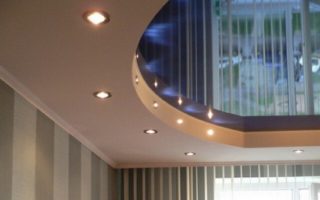
Among the advantages of LED ceiling lights are:
- color correction when illuminating part of the room;
- the ability to illuminate several objects, excluding unnecessary from the visibility zone;
- the choice of the degree of brightness and uniformity;
- lack of your own shadow and reduction of shadow from other interior items;
- savings: one spot light will consume much less electricity than a chandelier;
- compactness - fit into any interior, are used for various purposes and save space;
- long service life.
Spot lighting, due to the ability to coordinate the position of the lamps, has a positive effect on vision. Adjusting the brightness will not allow your eyes to strain, save the room from unnecessary glare and shadows. The construction will cost much less than a chandelier.
disadvantages
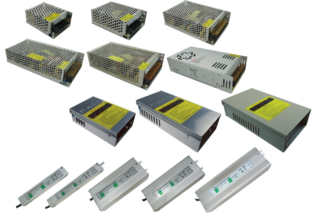
For every positive moment, there will definitely be a negative one, so you will have to face difficulties in working with point lighting systems:
- organization of the place and design of the structure: you need to accurately calculate the location of the luminaires and lay a large number of cables;
- for a twelve-watt light bulb, you will need a transformer or power supply;
- if the light bulb overheats, the panel may be damaged;
- some lamps require a special design, so not all surfaces are suitable for installation.
If you approach the installation of LEDs with responsibility: prepare the wiring for the lamps and the place for installation in advance, negative consequences can be avoided.
Varieties of LED lamps
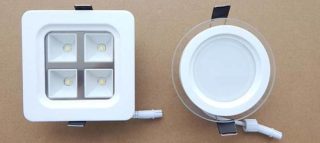
LEDs have a lot of technical advantages: they are durable, economical and compact. The light from such lamps lays down evenly, does not create unnecessary shadows and glare. They are also waterproof, as they are often used for lighting in greenhouses, swimming pools and ponds.
LED spotlights can be divided into three groups, which differ from each other in the way they are mounted and mounted. If we take into account the materials, shape and other characteristics of the product, we can distinguish, for example: flat, plastic, opaque, volumetric, glass, square, round, wide, and so on.
Overhead
Fastened to solid ceiling bases when it is not possible to make an installation niche. Typically used in warehouse or office space. Surface mounted luminaires consist of a mounting platform and a housing with a diffuser.
Embedded
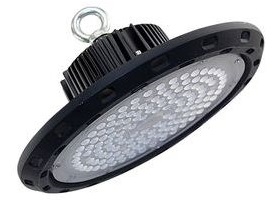
Typically used in plasterboard applications. Recessed light sources are especially loved by designers, since their field of application is so extensive that they can be used absolutely everywhere: in the pool, and on the stairs, and in the basement, and on the floor.
Spotlights consist of a one-piece body, where fasteners and fixtures for the lamp are already integrated. This simplicity provides economy, compactness and brevity of the product. Also, this device allows you to "hide" lamps - to place them in the mounting surface.
Suspended
The lamp is located at some distance from the ceiling. Usually hangs on a decorative cable that connects the base of the lamp and the battery to the body and the lamp. Suspended luminaires can be mounted on any type of ceiling: stretch, plasterboard, solid, rack, etc. It is also actively used by designers as a decorative element.
Spotlights can also vary as far as possible to change the direction and angle of inclination. Swivel devices can be twisted and twisted as you like, choosing the desired angle of inclination. You can't turn the static ones after fastening. The tilt and position of the light is not adjustable or altered.
Selection options
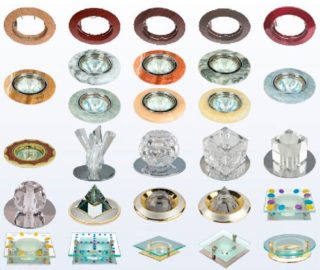
You need to choose LED lamps based on the place where they will be located, the goals and objectives of their use: they will illuminate an exhibition exhibit, an aquarium with fish or a sofa with a TV.
Design
Luminaires as an element of the interior help to create a coherent image. The choice will depend on the general style of the room: colors and shapes of decor elements, furniture.
Cartridge types
You need to choose lamps in accordance with the type of cartridge and its components: base, diameter of the connection of the base with pins, the number of contacts. There are threaded and pin types of caps, which are designated by letters of the Latin alphabet in accordance with their characteristics.
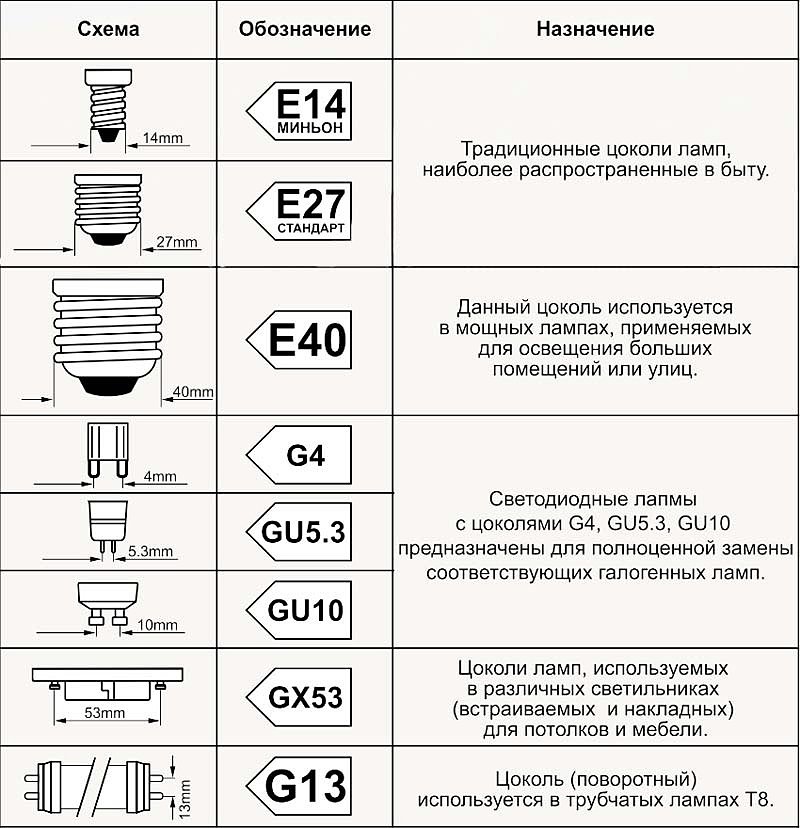
Brightness level
Brightness is determined by the power of the light bulb, so you need to take into account the technical characteristics of the device when buying it.
Degree of protection
One of the technical indicators responsible for safety and serviceability when using lamps. There are international standards for the degree of protection of electrical and electrical equipment. Basically, these systems protect against adverse environmental conditions and phenomena. This standard is IP, which determines the degree of protection of live parts from penetration of foreign objects, dust or moisture. Typically, the IP degree of protection is usually classified according to two-digit numbers (IP45 and IP54).
The first IP number corresponds to the degree of protection against ingress or impact of solid objects. The second is the degree of protection against moisture or water getting inside the case.
Calculation of the number of lamps for lighting a room
The easiest way to calculate the amount is to square the room.According to the generally accepted standard, there is 20 watts of power per 1 m2. For normal lighting, you need to multiply the number of square meters by the power of the lamp. The result will be equal to the power of all electrical devices per room. The location and number of windows, types of lamps, room design are also taken into account.
Luminaire arrangements
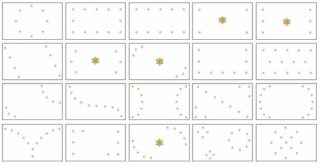
There are several standard layouts:
- oval - devices are placed around the perimeter in the form of an oval, the inside of the figure remains empty;
- circle - placement of devices around the perimeter in the form of a circle;
- corner placement - usually this option is combined with a chandelier;
- cross - this arrangement illuminates the maximum area;
- rectangle - visually enlarges the room;
- arc - placement is used when zoning a room, placed on a suspended structure in a place where an emphasis needs to be made;
- author's drawing - devices are lined up in the original order.
In order for the light to fall evenly, you need to place the lamps at the same distance from each other, taking into account the proportions of the picture, and also make an indent from the wall about 20 cm.If you cannot calculate the optimal location on your own, specialized online calculators will help with this.








